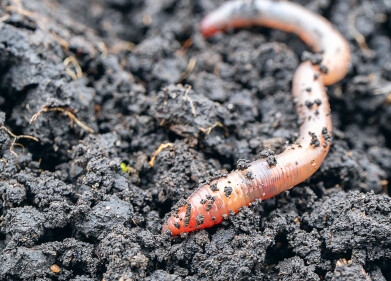Environmental Laboratory
How an Artificial Leaf Can Replace Fossil Fuels
Nov 12 2019
A team of scientists from the University of Cambridge have developed an “artificial leaf” that is capable of producing a widely-used gas without the consumption or combustion of fossil fuels. Syngas is used to make all kinds of products and commodities, such as fertiliser, fuel, pharmaceuticals and plastics, but it’s currently made by burning oil or gas.
This obviously results in undesirable but unavoidable consequences for the environment. However, the sustainable model pioneered by the Cambridge researchers works via sunlight, carbon dioxide and water alone, making it a far less resource-intensive, cheaper and greener alternative to traditional techniques. It’s hoped that eventually, the researchers will be able to develop a working alternative to petroleum via the same or similar methods.
Inspired by nature
The artificial leaf device was inspired by the process of photosynthesis which takes place naturally among all vegetation and converts sunlight into energy. The researchers combined two perovskite light absorbers with a cobalt catalyst and placed these atop the surface of their leaf. When submerged in water, the process begins.
One of the absorbers reacts with the cobalt to produce carbon oxygen. Meanwhile, the other absorber undertakes the process by which CO2 and water are converted into their constituent parts of carbon monoxide and hydrogen, which together, make syngas. While the device works most effectively in direct sunlight, it can also function to a lesser extent on cloudier or rainier days.
A viable fuel source?
While great strides have been made in producing electricity from clean sources – such as biogas plant optimisation, solar panel technology and offshore wind farms – experts are well aware that the majority of our energy demands come from fossil fuels for use in transportation industries. Of course, electric vehicles (EVs) are becoming more popular among private road users, but petrol and diesel are still integral to the aviation, shipping and heavy transport sectors.
“We are aiming at sustainably creating products such as ethanol, which can readily be used as a fuel,” explained Virgil Andrei, first author on the research paper. “It's challenging to produce it in one step from sunlight using the carbon dioxide reduction reaction. But we are confident that we are going in the right direction, and that we have the right catalysts, so we believe we will be able to produce a device that can demonstrate this process in the near future.”
Taking a leaf out of Mother Nature’s book
It’s not the first that the scientific community has looked to the natural world for inspiration when devising eco-friendly solutions to their problems. Indeed, other artificial leaves of this kind have been in development for some time, but previous prototypes have only been capable of producing hydrogen, not syngas. That’s because the Cambridge team used specific materials in their device to boost its efficiency.
Meanwhile, a biosolar leaf was launched earlier this year by a biochemical startup company in collaboration with Imperial College London (ICL). Combining sophisticated solar panels with microscopic plants like microalgae and phytoplankton, the devices are capable of producing clean energy, removing CO2 from the air and producing sustainable food options all in one fell swoop.
Digital Edition
AET 28.4 Oct/Nov 2024
November 2024
Gas Detection - Go from lagging to leading: why investment in gas detection makes sense Air Monitoring - Swirl and vortex meters will aid green hydrogen production - Beyond the Stack: Emi...
View all digital editions
Events
Nov 26 2024 Paris, France
Nov 27 2024 Istanbul, Turkey
H2O Accadueo International Water Exhibition
Nov 27 2024 Bari, Italy
Biogas Convention & Trade Fair 2024
Nov 27 2024 Hanover, Germany
Dec 02 2024 London, UK









.jpg)









